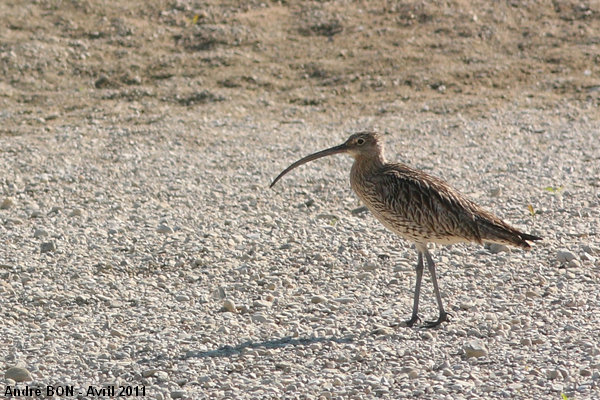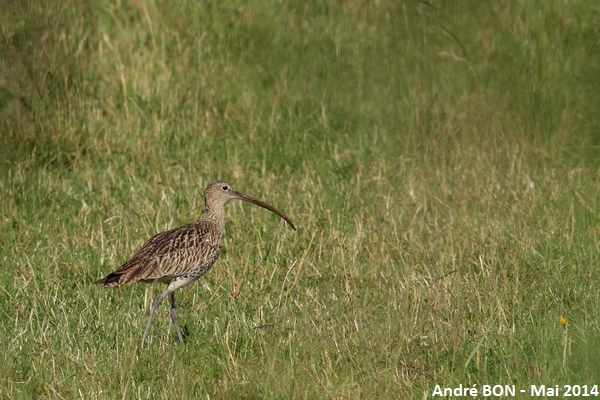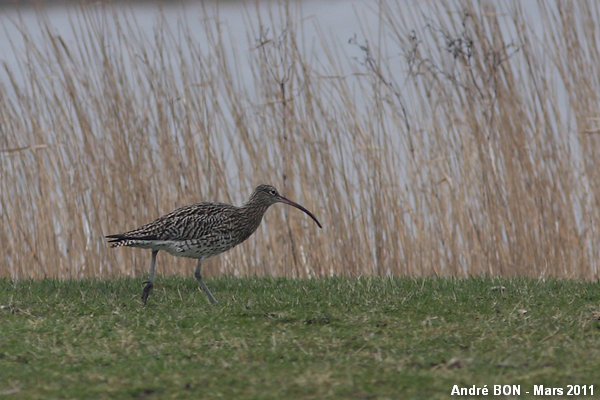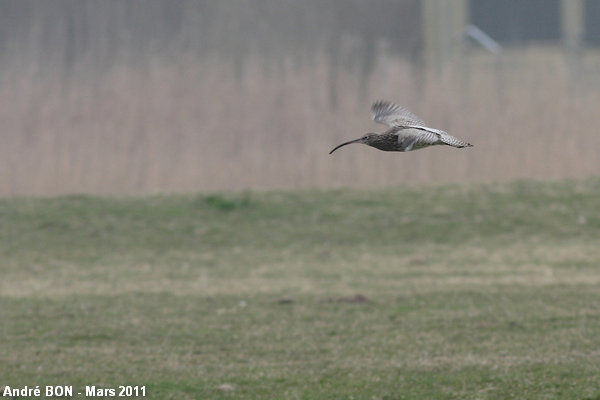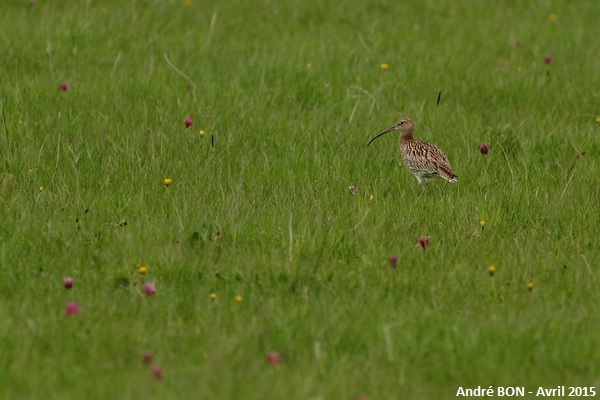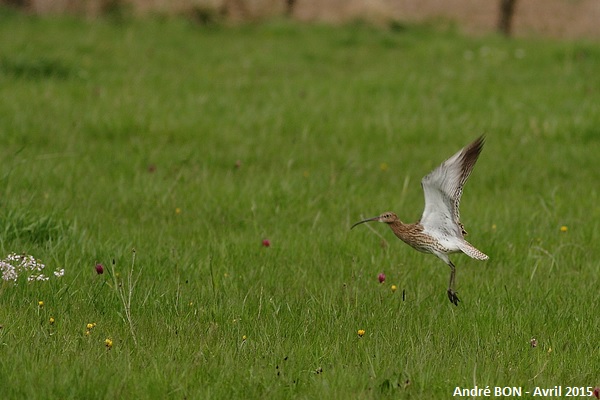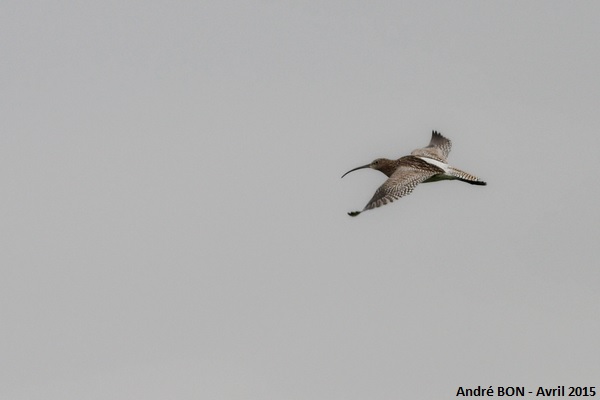Scientific name: Numenius arquata (Linnaeus, 1758)
Common name: Eurasian Curlew
French name: Courlis cendré, Courlis eurasien.
Order: Charadriiformes
Family: Scolopacidae
Size: Body size: 50 to 60 cm; Weight: 575 to 950 g; Wingspan: 80 to 100 cm. Females are slightly larger than males.
Habitat: Coasts, mud flats and estuaries. Inland meadows.
Food: Worms and molluscs on the sea coasts, earthworms and insects in meadows.
Nesting: The nest is build on the ground in meadows where the grass is not too high. Females lay 3 to 5 eggs in April-May.
Migration: Most of the Eurasian Curlews migrate in winter. They move to southern Europe, Africa and southern Asia.
Geographic area: Temperate Eurasia south of the Arctic Circle. It winters along sea coats and some birds even fly to South Africa.
|
The Eurasian Curlew is a large wader on which you first notice the long down-curved bill.
The plumage is speckled with grey, russet, brown and white. The rump is white.
The long legs are a bluish grey colour.
It has got its common name from its beautiful call.
The new farming methods, cutting grass earlier in the year in meadows, are destroying many nests and causing population decline.
The only possible confusion is with the Whimbrel (Numenius phaeopus). This last one is a smaller size, it shows a pale central crown stripe (not always visible), a typical whitish supercillium and its bill is shorter and almost straight on the two first thirds. The Eurasian Curlew's bill is more regularly curved from the base.
|














